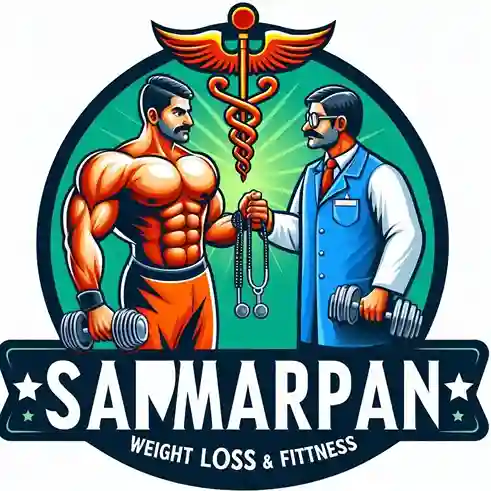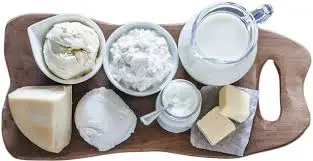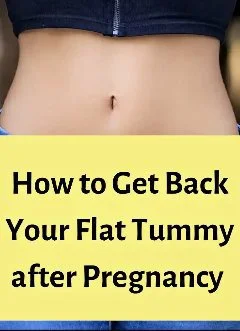Fat Free Cheese For Weight Loss
Introduction
Certain cheeses are lower in fat and calories, and some are healthier than others. Cheeses also range in terms of their nutritional value, including protein, vitamin, and mineral content.
Dairy products like cheese are manufactured from milk and milk substitutes. It is a staple cuisine in many cultures and comes in a variety of flavors and textures. Among other animals, cows, sheep, goats, and buffalo milk can be used to make cheese.
Though not all cheeses have the same nutritional value, cheese is an excellent source of critical nutrients like protein, fatty acids, amino acids, and vitamins and minerals. If someone is asking for a healthy alternative, this article offers the eight healthiest cheeses and the cheeses they might want to stay away from. The nutritional information is based on 21 g servings or about one medium slice or piece.
Though cheese is an excellent supplier of calcium and protein, many varieties are also heavy in saturated fat and cholesterol. In actuality, cheese accounts for about 23% of the saturated fats consumed daily by the average American.
Getting excessive amounts of saturated fat or cholesterol raises your risk of heart disease, high blood pressure, and high LDL cholesterol. Although cheese can be consumed in a balanced, healthful diet, the type and quantity of cheese you eat matter.
Cheese makes my mouth water simply thinking about it! It has the special ability to turn an ordinary meal into a rich treat. I enjoy eating it as a snack, including it in my lunch, or using it as the main ingredient in my dinner preparations. In addition, I like to play around with various collaborating concepts.
There are nearly many ways to savor this adaptable cuisine, as there are over 1,750 varieties of cheese in the world. (yes, you read correctly). There are plenty of cheesy options and healthy cheese options that are lower in calories for those who are continuing, so the good news doesn’t end there.
Cheese comes in an extensive range of flavors and textures, making it one of the most popular snacks and ingredients worldwide. However, cheese is sometimes seen as an indulgence that should be avoided by those of us attempting to decrease our weight. In actuality, though, some cheese varieties can be used in a diet that promotes healthy weight loss.
They contain healthy fats that can help you feel filled for longer as well as protein and calcium. Your diet for weight loss and how they can assist you in reaching your objectives. There are several varieties of cheeses to pick from, including hard, soft, and creamy types which will fulfill your desires and help you stick to your weight loss plan.
Nevertheless, each variety of cheese has advantages and disadvantages. In particular, soft cheese should be avoided during an IVF pregnancy.
Low Fat Cheese: What Is It?
Saturated fat is low in low-fat cheeses. Foods regarded as “low-saturated fat” by the U.S. Food and Drug Administration (FDA) have no more than 1 gram of saturated oils per serving.
Consuming only less than 5% to 6% of your daily calories from saturated fat is advised by the American Heart Association. This indicates that an individual consuming 2,000 calories a day should consume no more than 13 grams. (120 calories) of saturated fat.
When it comes to cholesterol, those with heart disease risk factors which include diabetes and high blood pressure should eat a low-cholesterol diet that contains no more than 200 mg of cholesterol daily. Women lacking heart disease risk factors should limit their recommended daily allowance of cholesterol to 300 mg.
Fat-Free Cheese: What Is It?
You may have heard of fat-free cheese if you’re trying to reduce the fat in your diet. However, what is fat-free cheese?
How is it created, and what does it taste like?
- How Does Cheese Get Made?
To make cheese, milk—typically cow’s milk—is combined with a starting culture of bacteria that break out lactose, the milk sugar, and release lactic acid. The final flavor of the cheese is influenced by this starting culture.
The milk then thickens when an enzyme called rennet is added, forming solid lumps known as curds and leaving behind whey, a liquid that is high in protein. After extracting the whey, the remaining curds are boiled, chopped, and compressed to extract even more whey.
Those are then left to age for a few weeks, a year, or even longer. Cheese is the result of adding salt and other flavorings. Nowadays, the amount of fat in the cheese is managed by regulating the amount of fat in the milk used to create it. The amount of fat in each cheese varies.
Cheese produced with fat-free milk is referred to as fat-free cheese. Nevertheless, how does fat-free milk get made?
How Do They Make Fat-Free Cheese?
An emulsion of water, protein, and fat makes up milk. Large fat globules in the milk separate and drift to the top as cream when the cow produces it because they are lighter than the water. That was the origin of an empty bottle of milk in the past. You may either enjoy the cream straight from the bottle or shake it up to mix it with the milk.
Nowadays, however, milk is homogenized by passing it through a fine-mesh filter, which disperses the fat globules into smaller ones, preventing them from rising to the top.
A centrifuge can be performed to eliminate such fat globules. By spinning the milk at a high speed, the fat globules completely separate, leaving all of the fat in one container and skim, or fat-free milk, in another.
Thus, all that is required to manufacture fat-free cheese is to extract the fat from the milk and then use that milk to make the cheese.
How Does It Taste?
The flavor of fat-free cheeses will differ depending on the type. For example, fat-free mozzarella and fat-free ricotta are currently obtainable. However, the taste of fat-free cheddar and Monterey Jack will require some getting accustomed to, both in terms of mouthfeel and flavor (fat contributes significantly to a food’s flavor).
Generally speaking, fat-free cheeses are tougher and much more crumbly; they are not entirely creamy. It is important to note that some producers add more salt to fat-free cheese to make up for its flavor deficiency. Therefore, you may notice that fat-free cheese is a little saltier than you’re used to. Additionally, this affects people who are attempting to control their sodium intake.
Making Use of Fat-Free Cheese
The fact that fat-free cheddar doesn’t melt as well as full-fat or reduced-fat cheeses is likely its largest drawback. Using it in its shredded form will help you get across this to some degree. However, fat-free cheese will never completely melt at least not in the manner you’re familiar with.
For instance, you might think that the cheese within a casserole prepared with fat-free cheese will melt a little while the cheese on top will not if you mix some cheese inside the casserole. It appears that the surrounding moisture and possibly the lipids of other components aid in the disappearance of fat-free cheese. On top, the cheese will partially brown but not completely melt.
It is up to you whether or not you find this acceptable. This may or may not be a worthwhile trade-off if you’re aiming to cut back on fat in your diet.
What are the advantages of eating cheese when attempting to lose weight?
You might have thinking about increasing your protein intake if you’ve ever reached a weight loss standstill. In addition to being vital for digestion and metabolism, protein is a necessary element that can aid in the growth and maintenance of muscle. Beyond this, yet, a large body of research backs up the notion that some protein types can aid in weight loss.
This is because eating protein at breakfast helps to decrease your hunger for the next part of the day and improve satiety, or the sensation of being full. Furthermore, some protein varieties are linked to decreased cholesterol and a lower risk of heart attack and stroke. Here are some ideas on how to include cheese in your diet:
Creating a smoothie: Including a protein-rich component in your smoothie, such as Greek yogurt or protein powder, can help you ingest more protein while maintaining the other nutritious elements.
Cheese types to think about if you want to lose weight It’s crucial to think about your cravings when deciding whether to include cheese in your diet. Cheese is an excellent technique to add more protein to your diet and satisfy a range of appetites, from sweet to salty. The items that follow are some of the greatest cheese varieties to think about when following a diet plan to lose weight:
- Hard cheeses: Full of calcium and fat, hard cheeses are a great enhancement to any diet plan aimed at losing weight. Gruyère, Swiss, and cheddar are popular choices.
- Soft cheeses: Rich in calcium, soft cheeses have less fat than hard cheeses. Camembert, Gouda, and Brie are popular choices.
- Creamy cheeses: If you want to boost your diet’s flavor without getting over the recommended amount of healthy fats, creamy cheeses are a fantastic choice. Mozzarella, Monterey Jack, and Colby are well-liked choices.
Hard cheeses:
Cheddar: Because of its high fat, protein, and calcium content, cheddar is one of the greatest cheeses to incorporate into a diet plan for weight loss. Cheddar’s robust richness and velvety texture make it a popular choice.
Gruyère: With its hard and hard flavor, Gruyère goes well with salads and soups, among other foods. It is also high in protein and calcium, which makes it an excellent option for a diet that aims to reduce weight.
Swiss: Another hard cheese that is high in protein and calcium, Swiss is excellent for enhancing the palate appeal of casseroles and sandwiches.
Parmesan: Another hard cheese that is high in protein as well as calcium, Parmesan is excellent for giving food a deep, savory flavor.
Soft cheeses :
Brie: Brie is a creamy, high-sodium cheese that goes well with an assortment of sweets made with nuts and fruit.
Camembert: referred to for its delicate texture, Camembert goes well with a range of foods, such as fruit and salads.
Gouda: A common choice for enhancing the flavor of soups and sandwiches, Gouda is a Dutch-style cheese that is high in potassium.
Mozzarella: A prevalent low-fat substitute, mozzarella contributes fat, calcium, and protein. It can be added to a variety of foods, such as salad, pizza, and pasta.
Creamy cheeses :
Colby: An appreciated non-dairy substitute, Colby adds a deep flavor to a range of recipes, such as soups and casseroles.
Monterey Jack: Like mozzarella as well as Monterey Jack is low in fat and high in calcium and protein. Pasta and casserole recipes can benefit from its addition.
Romano: A strong-tasting, robust wine, Romano is a great way to add flavor to a variety of foods, such as pasta and soups.
Tips on how to include cheese in your diet
Pick your cheese cautiously: Although cheeses are a fantastic source of protein, they also include fat and sodium, so for optimal benefits, make sure you’re eating the proper kind. Choose those that are low in sodium and high in calcium, protein, and fat if at all possible.
Control portion sizes: Cheese can be heavy in fat even though it’s a fantastic source of protein. To avoid overindulging and adding excessive calories to your diet, it’s critical to pay attention to portion sizes.
Combine cheese with vegetables: When introducing cheese into your diet, go for a rich type that is also low in salt. For instance, try combining Swiss with a green salad or cheddar with a salad composed of avocado, olives, and tomatoes.
Pair cheese with whole grains: To help you feel satisfied and avoid being overly hungry, it’s crucial to have a dish of entire grains, like bread or pasta, after eating cheese.
Maintain its freshness: Cheese usually stays fresh for around two weeks, but with appropriate keeping, it can last up to six months. It will remain fresh and delicious until it’s time to eat if you keep it covered and in the fruit and vegetable part of your refrigerator.
Five Delicious Low-Calorie Cheeses
- Parmesan Cheese: The Greatest Cheese for Losing Weight
Parmesan is the ideal healthy cheese to add to your pasta meal or heavy soups because it only has twenty carbohydrates per tablespoon! In addition to being low in calories, parmesan has a high protein content, which prolongs feelings of satisfaction. There are 4g of protein in 2 teaspoons!
When looking for the healthiest Parmesan cheese, keep the following three points in mind:
Examine the compounds: Choose Parmesan which has only a few basic ingredients, preferably enzymes, milk, and salt.
Select Shredded or Shredded: Pre-grated or shredded alternatives are better if you value convenience.
Be Aware of the Sodium Content: Parmesan can be salty, therefore search for products with less sodium that still have a lot of flavor by comparing labels.
Yes, eating Parmesan cheese can help you lose weight. Here are some explanations:
Encourages Satiety: Parmesan’s protein and healthy fats can encourage feelings of fullness, which is good for controlling weight.
Low Lactose Content: Parmesan has a lower lactose content than other cheeses, thus many people who are lactose intolerant can eat it without any problems.
Nutrient Density: Parmesan’s calcium content is complemented by its high phosphorus, magnesium, and vitamin A and B12 content, all of which support general health.
So feel free to prepare a delicious, healthy snack that is similar to parmesan crisps.
- Part-Skim Mozzarella: The Greatest Flavored Low-Calorie Cheese
Whole milk has only 85 calories per slice, whereas part-skim mozzarella cheese has 70 calories. A tasty, low-calorie, wherever they are or pre-workout snack are mozzarella sticks! A single low-fat mozzarella cracker contains 222 milligrams of calcium, 7 grams of protein, and only 80 calories. It’s obvious that mozzarella ranks as one of the healthiest cheeses available, and it tastes great too! All things considered, this might be among the greatest low-calorie cheese choices available.
For people who are trying to reduce weight, this low-calorie, high-protein cheese option is a wise choice. It continued to be high in calcium and protein, promoting the health of bones and muscles. This makes it fantastic for a diet high in nutrients, giving you the nutrients you need while keeping your calorie intake in check.
With part-skim mozzarella, make it a night of flatbreads.
- Camembert: The Greatest Soft Cheese with Fewer Calories
Camembert reminds me of Brie’s spunky cousin. For that smooth brie feel with a slightly extra bite, go for this cheese, which has only 85 calories per ounce. If you’re enjoying, a spread with Camembert cheese and apples is the ideal (and simple) appetizer.
A soft cheese that is high in calcium and protein, camembert promotes the health of bones and muscles. It has a larger percentage of fat, but because of its rich flavor and creamy texture, you may eat smaller quantities and still enjoy the flavor without consuming a lot more calories. In light of this, Camembert is a fantastic option for people
who want to indulge in moderation while still eating a balanced diet.
Two particular pointers for selecting healthful Camembert cheese are as follows:
Select Lower-Fat Types: A few brands provide Camembert that is lower in fat. To enjoy the creamy mouthfeel with less saturated cholesterol, go for these.
Verify Organic Certification: If you can, choose Organic Camembert. This generally indicates that the dairy product is produced from milk from grass-fed cows that are hormone and antibiotic-free, making it a healthier option.
- The Best Low-Calorie Cheese for Building Muscle: Swiss Cheese
Holy cow (or, cheese), one slice of Swiss cheese is almost 100 calories! Add a slice of Swiss cheese to a burger or toast to boost your protein and calcium consumption. Because it has a lower salt content than other lunch slice options, Swiss cheese is therefore the ideal solution if you are limiting your sodium intake. Swiss cheese is undoubtedly one of the more unusual low-calorie cheeses because of its sweeter, slightly nuttier flavor.
Calcium and calcium, which are abundant in Swiss cheese, help to maintain strong bones and muscles. It is a wonderful option for people watching their salt eating because of its milk flavor and decreased sodium level.
Additionally, Swiss cheese has less fat than many other cheeses, making it a good addition to a diet high in protein and balanced without adding a lot of carbohydrates.
Serve this sun-dried tomato and Swiss fondue at your next gathering.
- Cottage Cheese: Best Low-Calorie Cheese to Help Control Appetite
Eat your heart out, dieters! Having only 164 calories per cup, cottage cheese is low in fat (if you choose the low-fat type), low in carbohydrates, and high in protein, and this again keeps you fuller for longer. Savor it on its pair it with cheese for an appropriate lunch or snack, or add fruit or veggies. This multipurpose cheese is unquestionably among the healthiest cheeses to consume.
Because it is high in protein and low in calories, cottage cheese is an excellent selection for anyone trying to retain or lose muscle. It is low in fat and carbohydrates and has a high protein content that helps regulate hunger and promote satiety.
For a low-calorie, high-protein diet that promotes weight management and general health, cottage cheese is perfect. Cottage cheese can even be used to make ice cream!
Here are three particular pointers for purchasing nutritious cottage cheese:
Choose Low-Fat or Non-Fat Types: Pick cottage cheese that is low in calories and saturated fat for a creamy texture that is ideal for health-conscious snacking.
Search for Basic Ingredients: Choose cottage cheese that has cultures, milk, and cream listed as its primary ingredients.
Verify the Protein Levels: Consider cottage cheese that features a high-protein label; each serving of this type of cottage cheese usually has 15–20 grams of protein. It is therefore an excellent option for promoting muscle repair and prolonging feelings of fullness.
Other healthy properties of cheeses
Low in salt: The following cheeses are low in salt:
- Swiss cheese
- cottage cheese
- ricotta
Calorically rich: The cheeses listed below are rich in calcium:
- blue cheese
- Swiss cheese
- feta
- mozzarella
High in protein:
High in protein are:
- cottage cheese
- blue cheese
- Swiss cheese
- goat cheese
- mozzarella
Conclusion
Cheese comes in a vast array of flavors and textures, resulting in it being one of the most renowned snacks and ingredients worldwide. However, cheese is occasionally seen as an indulgence that should be avoided by those of us attempting to reduce our weight. In actuality, though, some cheese varieties can be used in a diet that promotes healthy weight loss! They contain healthy fats that can help you feel filled for longer in addition to protein and calcium.
The most effective kinds of cheese to include in your diet for weight loss and how they can support your objectives will be discussed in this article. There are several varieties of cheeses to pick from, including hard, soft, and creamy varieties, which will fulfill your desires and help you stick to your weight loss plan.
FAQs
Which cheese is the greatest for losing weight?
Cheddar: Because of its high fat, protein, and calcium content, cheddar is one of the greatest cheeses to include in a diet plan for weight loss. Cheddar’s robust flavor and velvety texture make it a popular choice. Gruyère: With its harsh and hard flavor, Gruyère goes well with salads and soups, among other foods.
Can I eat cheese while trying to lose weight?
Cheese’s high calorie, fat, and sodium content worries some people. However, cheese is also a great source of calcium, protein, and several other nutrients. Cheese ingestion may even help people lose weight and avoid osteoporosis and heart disease.
Does eating less fat cheese help you lose weight?
Dairy fat has generally returned to prominence. Consuming more full-fat dairy products than low-fat dairy has been linked to a lower risk of cardiovascular disease, type 2 diabetes, mortality, and maybe weight gain, according to researchers analyzing the expanding body of scientific data.
Can I have cheese every day?
Although it’s not essential to exclude cheese from your diet, use high-fat cheeses sparingly if you have high blood pressure or cholesterol. Seven percent of your daily calories come from a 30-gram quantity of cheese, and a 30-gram portion of cheddar may contain more salt than a packet of crisps.
Natural cheese: what is it?
A well-known industry term for differentiating between processed and unprocessed cheese is “natural cheese.” In contrast to processed cheese, which is created by heating natural cheese and adding other components like preservatives, natural cheese is manufactured from milk, cheese cultures, enzymes (rennet), and salts.
Which cheese has the least amount of fat?
Different types of cheese naturally have different amounts of fat. These consist of Neufchâtel, string cheeses, farmer’s cheese, and part-skim mozzarella. Compared to cow’s milk cheese, goat cheese has fewer calories and less fat.
Is cheese waste or healthy?
Cheese is often a tasty, nourishing, and healthful food. There are, however, certain exceptions. People frequently claim to love cheese so much that they can’t live without it, yet they are concerned that it can lead to unintended weight gain or heart disease.
References :
- Raskovic, N. (2023, February 13). Types of cheese you can use during weight loss. Keystone Farms Cheese. https://www.keystonefarmscheese.com/blogs/the-cheese-blog/types-of-cheese-you-can-use-during-weight-loss#:~:text=Cheddar%3A%20Cheddar%20is%20one%20of,dishes%2C%20including%20soups%20and%20salads.
- PharmD, J. M. (2024, November 14). Which cheeses are low in fat and cholesterol? Verywell Health. https://www.verywellhealth.com/which-cheeses-can-i-eat-on-a-cholesterol-lowering-diet-697777
- Reece, A. (2024, November 26). 5 Tasty Low-Calorie cheeses. American Dairy Association North East.
https://www.americandairy.com/dairy-diary/5-cheeses-full-of-taste-but-low-in-calories/ - Zoppi, L. (2021, March 8). What is the healthiest cheese?https://www.medicalnewstoday.com/articles/healthiest- cheese#other-health-benefits
- Alfaro, D. (2022, August 8). What is Fat-Free Cheese? The Spruce Eats. https://www.thespruceeats.com/what-is- fat-free-cheese-5088616#:~:text=For%20instance%2C%20fat%2Dfree%20ricotta,)%2C%20but%20also%20their %20mouthfeel.



